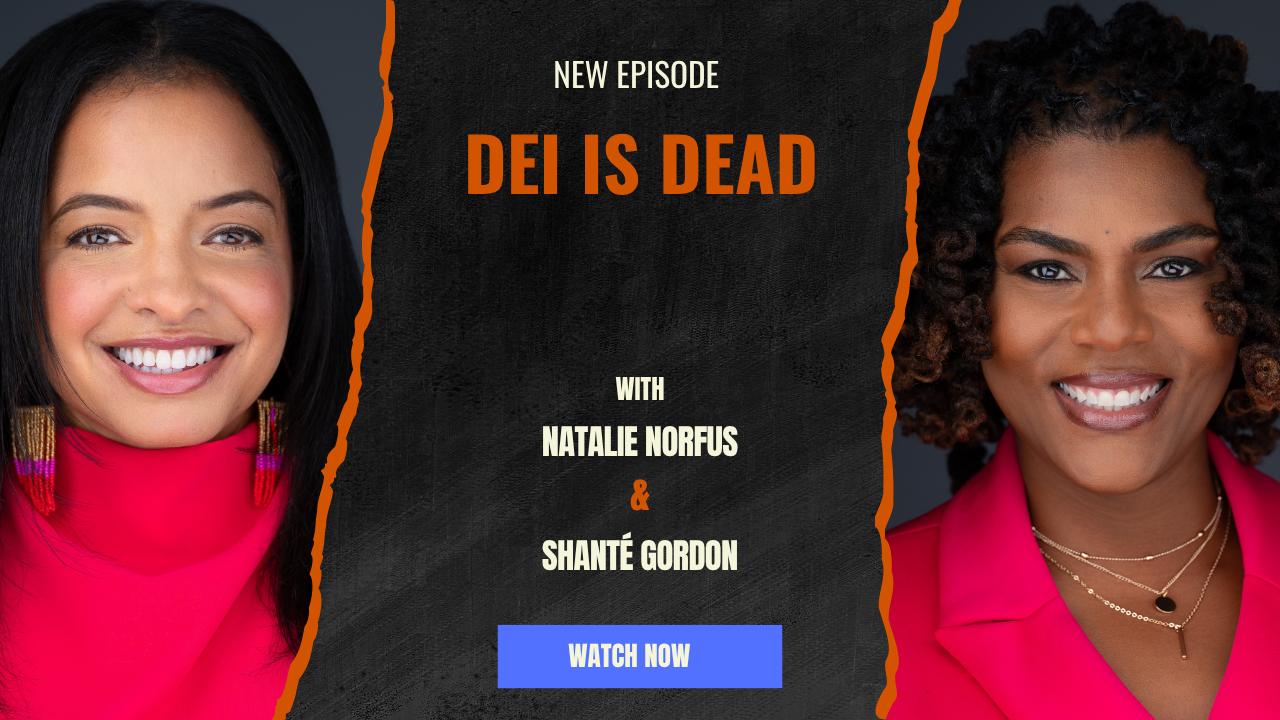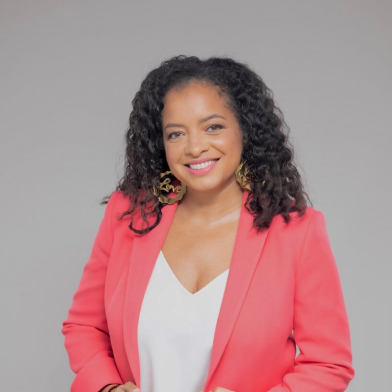DEI is Dead

In 2020, the world cracked open.
A global pandemic collided with a national reckoning around racial injustice, and for a brief moment, businesses were paying attention, not just to profits, but to people. Corporate statements poured in. Task forces were launched. New DEI titles popped up overnight. For the first time in a long time, there was visible urgency.
And then, as quickly as it arrived, that urgency began to evaporate.
Today, just a few years later, we’re seeing a wave of organizations quietly stepping back. Budgets slashed. Teams dissolved. Priorities “shifted.” The sentiment is familiar, often unspoken but implied: Was this ever going to work anyway?
In the premiere episode of What’s the DEIL?, co-hosts Natalie Norfus and Shanté Gordon confront this fatigue head-on. Their provocative opening line—“DEI is dead”—isn’t a surrender. It’s a challenge. Not to abandon the work, but to stop treating it as work that lives off to the side.
Because here’s the truth: DEI isn’t dead. But the way many organizations approach it should be.
The False Promise of the Quick Fix
A common thread in the conversation is this idea that companies expected transformation on a tight timeline. Leaders asked: “We’ve had a DEI team for two years—why hasn’t anything changed?”
It’s a question born from misunderstanding. As Natalie points out, “This has been going on for hundreds of years. The idea that there’s an end is the first misconception.”
That’s not to say there can’t be progress. But equity work doesn’t follow the cadence of quarterly OKRs. It’s not a sprint, and it’s certainly not a PR campaign. It’s a long-term commitment that must be embedded into how a company thinks, hires, leads, markets, and treats people.
Too many DEI initiatives start big and flashy only to fizzle when reality sets in. That’s because they often lack the fundamentals: measurable goals, realistic timelines, internal accountability, and above all, buy-in from the top.
Leadership Without Self-Work Isn’t Leadership
Natalie and Shanté don’t shy away from uncomfortable truths. One of the biggest?
Many executives never did the internal work.
They hired consultants. Launched programs. Sat in on a few listening sessions. But they didn’t sit with themselves. They didn’t examine their biases, their blind spots, or their behaviors. And when you don’t do that? Your teams know. Your people feel it. And your initiatives fall flat.
As Shanté puts it: “Leaders went out and deployed resources, but they stopped short of looking at themselves… How are you contributing to this?”
This is one of the more radical but necessary shifts in DEI today: moving from checklists to consciousness. You cannot lead for equity if you haven’t asked yourself hard questions about where your decisions come from, who you tend to trust, who you sponsor, and who gets left out of the room.
DEI that lives in policy without showing up in practice will always fail.
Language Matters. So Let’s Get Aligned.
One of the best moments in the episode comes early on when Natalie and Shanté break down their shared definition of DEI. Not just as buzzwords, but as real, living concepts:
-
Diversity: The variety of human differences, seen and unseen. It’s not just about race or gender—it’s about every part of someone’s identity.
-
Equity: Fairness. Not sameness. It’s about systems and decisions that acknowledge differing needs and remove barriers.
-
Inclusion: Belonging. Not tolerating someone’s presence, but valuing it. Making sure people can be fully themselves at work and be recognized for it.
This shared language is crucial. Too often, leaders jump into action without alignment on what they’re even solving for. Diversity alone is not the goal. Equity without accountability is an illusion. Inclusion without safety is just good branding.
So let’s slow down, define our terms, and make sure we’re moving in the same direction.
Why We Need to Kill the Silos
The central thesis of the episode is both simple and revolutionary: DEI should not be its own isolated strategy.
As Shanté says, “It should be integrated. Not off to the side.” When DEI sits in its own corner—separate from product, marketing, HR, finance, operations—it becomes optional. Political. Performative. But when it’s embedded into every layer of business strategy, it becomes powerful.
Natalie reinforces this point with a great example: “You don’t need a DEI recruiting strategy. You need a recruiting strategy that reflects your values.”
This mindset shift is what will carry organizations forward in 2025 and beyond. The most effective leaders are already thinking this way. They’re asking:
-
How are we applying a DEI lens to every decision we make?
-
Are we listening to the lived experiences of our employees?
-
Are we measuring outcomes—not just intentions?
The Real ROI Is Belonging
At the heart of the episode is one core belief: People do their best work when they feel seen, safe, and valued.
And yet, so many workplaces still operate from a place of fear. Managers are afraid to have honest conversations. Executives are afraid of getting it wrong. Employees are afraid of speaking up.
Fear doesn’t build culture. It protects the status quo.
By contrast, inclusion unlocks performance. When people trust that their voices matter, that they can show up without code-switching, that bias will be named and addressed—they thrive.
The work of DEI isn’t about pleasing everyone. It’s about creating clarity, consistency, and compassion. As Natalie puts it: “This isn’t about separating people. It’s about creating the conditions where everyone can connect and contribute.”
So… Is DEI Dead?
Not at all.
But the way many organizations have approached it, through compliance checklists, vague training sessions, and optics-first strategies, needs to die.
Instead, DEI should be woven into the fabric of business:
-
As a lens for product development and hiring
-
As a standard for people management and performance reviews
-
As a value in client relationships, vendor partnerships, and marketing
-
As a driver of innovation, resilience, and growth
Natalie and Shanté’s message is clear: If you want your organization to be relevant, profitable, and people-centered in the long term, equity isn’t optional. It’s essential.
So no, DEI isn’t dead. But it is evolving and the companies willing to evolve with it will be the ones who lead.
Connect With Us
If you found this discussion compelling, we invite you to connect with us further. Here are some ways to stay in touch:
- Follow Natalie Norfus on LinkedIn
- Follow Shanté Gordon on LinkedIn
- Book a consultation with The Norfus Firm
- Follow What’s the DEIL on Instagram and TikTok
